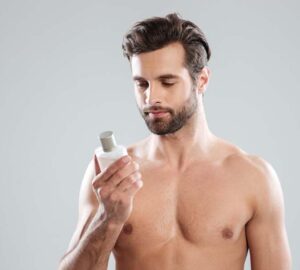Are you tired of the discomfort and frustration that comes with clogged ears due to congestion? We’ve all been there, and it can be incredibly bothersome. The good news is that there’s a simple and effective solution at your fingertips – hydrogen peroxide. In this blog post, we’re going to explore the wonders of hydrogen peroxide and how it can help you regain your hearing and alleviate that annoying ear congestion. You’ll discover the ins and outs of using hydrogen peroxide safely and efficiently, allowing you to bid farewell to those pesky clogged ears.
But first, let’s understand why ear congestion happens in the first place. Whether it’s allergies, sinus infections, or changes in air pressure, we’ll uncover the root causes and how hydrogen peroxide can come to your rescue. So, if you’re ready to experience the relief and clarity of unclogged ears, read on. Your solution is just a few drops away!
How To Unclog Ears From Congestion With Hydrogen Peroxide
Unclogging ears from congestion with hydrogen peroxide can be an effective home remedy. However, it’s essential to use caution and follow the correct steps to avoid any potential complications. Here’s a step-by-step guide on how to unclog ears from congestion using hydrogen peroxide:
Materials you’ll need:
- 3% hydrogen peroxide solution (readily available at most drugstores)
- A clean dropper or a syringe (without the needle)
- A clean towel or tissue
- A bowl or cup
- Warm water (optional)
Procedure:
- Gather your supplies: Ensure you have all the necessary materials ready and within reach.
- Wash your hands: Before you start, make sure your hands are clean to prevent introducing any bacteria into your ear.
- Prepare a comfortable and safe environment: Find a quiet, well-lit space where you can comfortably sit or lie down. Make sure you won’t be disturbed during the procedure.
- Tilt your head: Tilt your head to the side so that the affected ear is facing upward. You may want to do this while lying on your side.
- Warm the hydrogen peroxide: To make the process more comfortable, you can warm the hydrogen peroxide by placing the bottle in a bowl of warm water for a few minutes. This step is optional but can help prevent discomfort caused by cold liquid in the ear.
- Fill the dropper or syringe: Use a clean dropper or syringe to draw up a small amount of 3% hydrogen peroxide solution. Be careful not to touch the tip of the dropper or syringe with your fingers to maintain cleanliness.
- Administer the hydrogen peroxide: Gently place the tip of the dropper or syringe at the entrance of your ear canal. Do not insert it too deeply; just let it sit at the entrance. Squeeze the bulb or plunger slowly to release a few drops (about 3-4 drops) of hydrogen peroxide into the ear canal.
- Stay in position: Keep your head tilted to the side with the hydrogen peroxide in your ear for about 5-10 minutes. You may hear a fizzing or bubbling sound, which is normal as the hydrogen peroxide helps break down earwax and congestion.
- Drain and wipe: After the recommended time, tilt your head back to allow the solution to drain out of your ear onto a clean towel or tissue. Gently wipe the outer ear to remove any excess hydrogen peroxide.
- Repeat if necessary: If you still feel congestion or discomfort in your ear after the first attempt, you can repeat the process for a maximum of three days. Do not overuse hydrogen peroxide, as it can cause irritation with frequent use.
- Seek medical advice: If your ear congestion persists or worsens after several attempts or if you experience pain, drainage, or hearing loss, consult a healthcare professional for further evaluation and treatment.
Remember that hydrogen peroxide should not be used if you have an ear infection, a perforated eardrum, or any other ear condition that requires medical attention. If you’re uncertain about the cause of your ear congestion or have any doubts, consult a healthcare provider before attempting this home remedy.
The Benefits Of Hydrogen Peroxide
Hydrogen peroxide is a readily available and affordable solution that can help clear ear congestion. It has several advantages:
Versatility in Cleaning and Disinfection
Hydrogen peroxide, often recognized as a common household item, boasts a multitude of benefits. One of its primary advantages lies in its versatility as a cleaning and disinfecting agent. Hydrogen peroxide is highly effective at eliminating bacteria, viruses, and fungi, making it a valuable tool for maintaining a clean and hygienic living environment. It can be used on various surfaces, from kitchen countertops to bathroom fixtures, effectively sanitizing them and helping to prevent the spread of germs. Furthermore, it is an eco-friendly choice, as it breaks down into water and oxygen, leaving no harmful residues behind.
Wound Care and First Aid
Hydrogen peroxide is a staple in many first-aid kits due to its exceptional wound-cleaning properties. When applied to minor cuts, scrapes, and abrasions, it fizzes upon contact with organic material, helping to remove debris and dead tissue from the wound. This effervescence not only aids in cleaning but also provides a visual indicator of its activity. Additionally, hydrogen peroxide can help to reduce the risk of infection by killing harmful bacteria around the wound. It should be noted, however, that it is best used for initial wound cleaning and should be followed by a sterile saline solution to avoid prolonged exposure, which can impede the natural healing process.
Teeth Whitening and Oral Hygiene
Another notable benefit of hydrogen peroxide is its role in dental care. It is a key ingredient in many teeth-whitening products and mouthwashes due to its ability to break down and remove surface stains from teeth. When used as a mouthwash in diluted form, it can also help in reducing the bacterial load in the oral cavity, contributing to improved oral hygiene. However, it’s essential to use hydrogen peroxide for oral purposes in a safe and diluted manner and under the guidance of a dentist, as excessive use or concentration can lead to oral irritation and tissue damage. Overall, hydrogen peroxide offers a range of practical benefits in both household and personal care applications, making it a valuable addition to many households.
Precautions And Tips
- Store Safely: Keep hydrogen peroxide out of children’s reach and store it in a labeled container.
- Ventilation: Ensure proper ventilation when using hydrogen peroxide for cleaning to avoid inhaling fumes.
- Eye and Skin Protection: Wear gloves and eye protection when handling concentrated hydrogen peroxide.
- Dilution for Wounds: Dilute hydrogen peroxide (3%) for wound cleaning to prevent tissue damage.
- Limited Wound Use: Use hydrogen peroxide for initial wound cleaning only, not for prolonged exposure.
- Consult a Professional: Seek medical advice if you have concerns about a wound or burn.
- Dilution for Oral Rinse: Dilute hydrogen peroxide with water for oral rinsing to reduce the risk of irritation.
- Do Not Swallow: Never swallow hydrogen peroxide used for oral hygiene; spit it out after rinsing.
- Consult a Dentist: Consult a dentist before using hydrogen peroxide for teeth whitening.
- Follow Usage Instructions: Adhere to product instructions and guidelines for safe and effective use in cleaning and disinfection.
Conclusion
In conclusion, hydrogen peroxide offers a range of benefits when used appropriately, from its versatility as a cleaning and disinfecting agent to its role in wound care, oral hygiene, and teeth whitening. However, it is crucial to exercise caution and follow specific guidelines and precautions to ensure safe and effective use. Whether you’re using it to maintain a clean home environment or for personal care, responsible handling and proper dilution are key. Always consult with healthcare professionals or dental experts when necessary, and never forget the importance of proper storage and ventilation. With these precautions in mind, hydrogen peroxide can be a valuable addition to your household toolkit.




